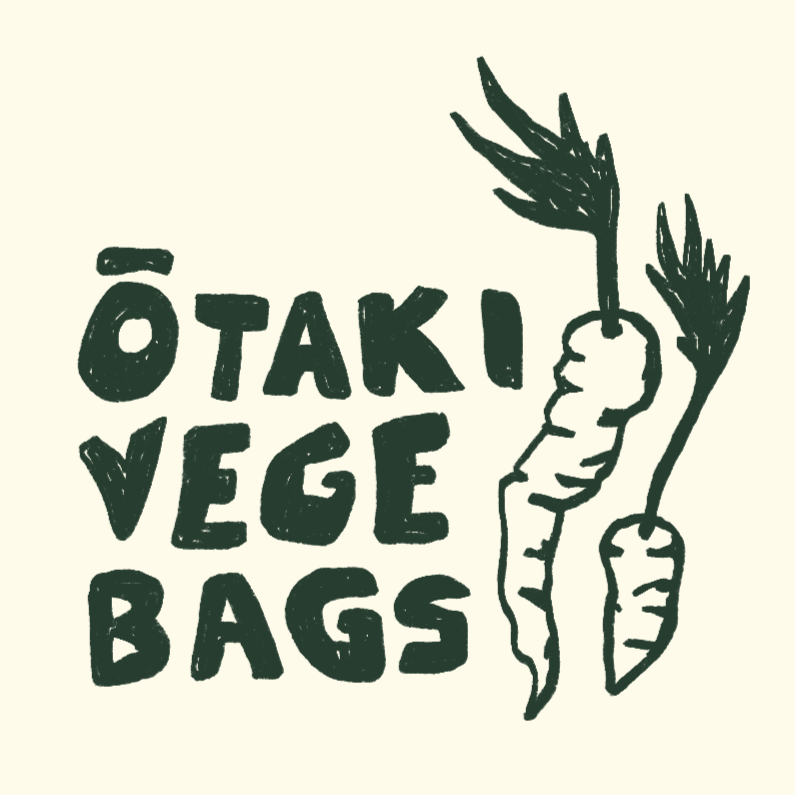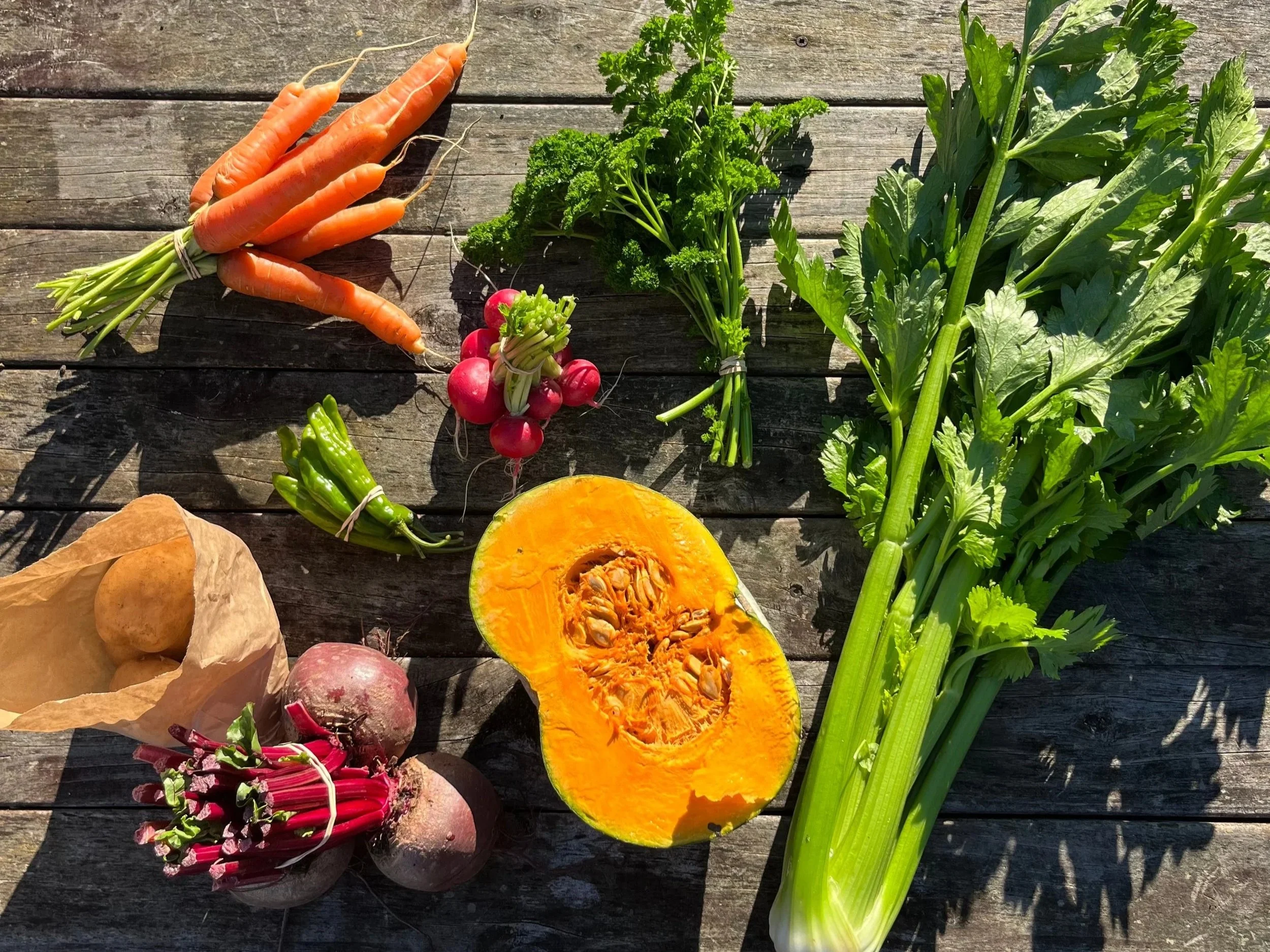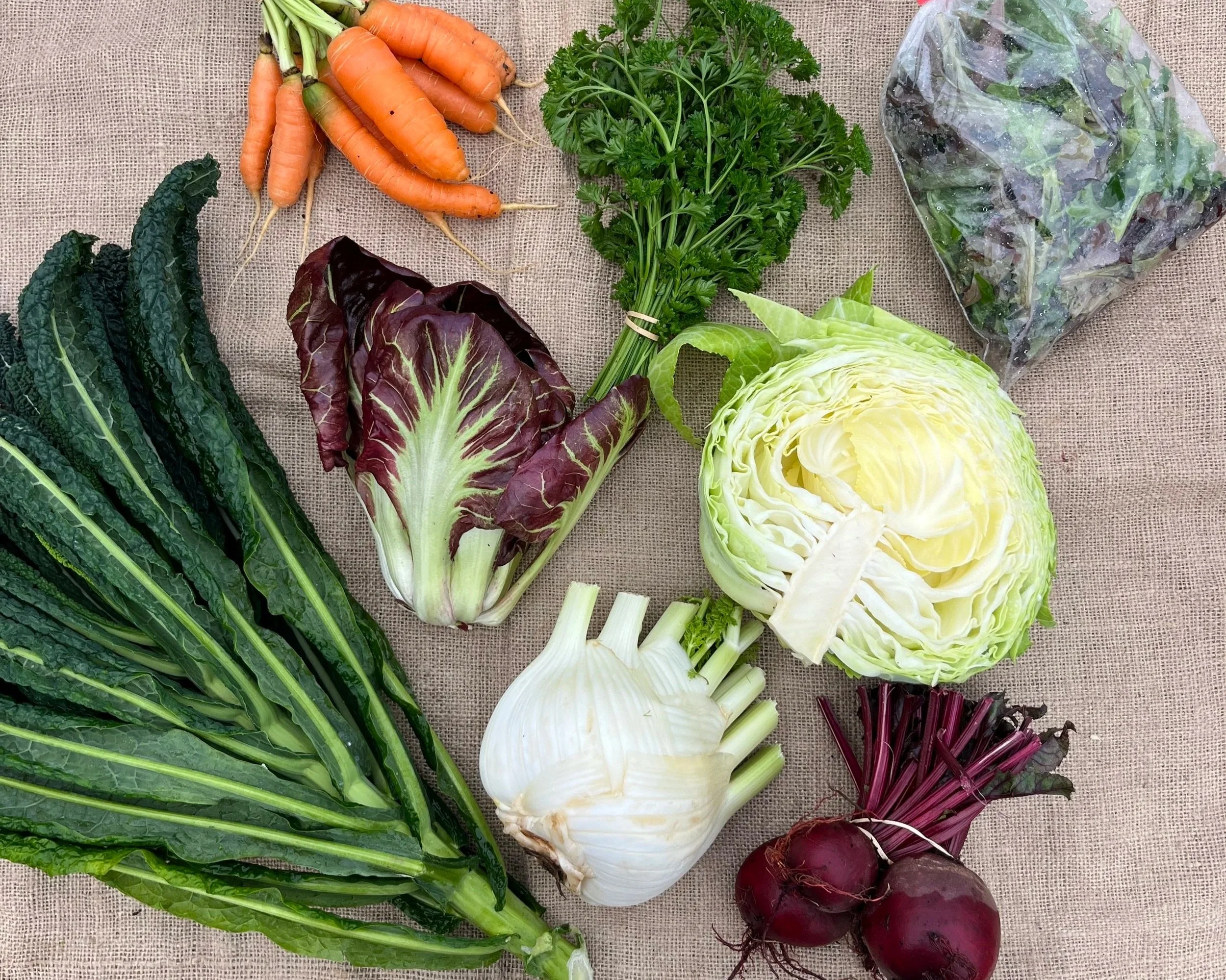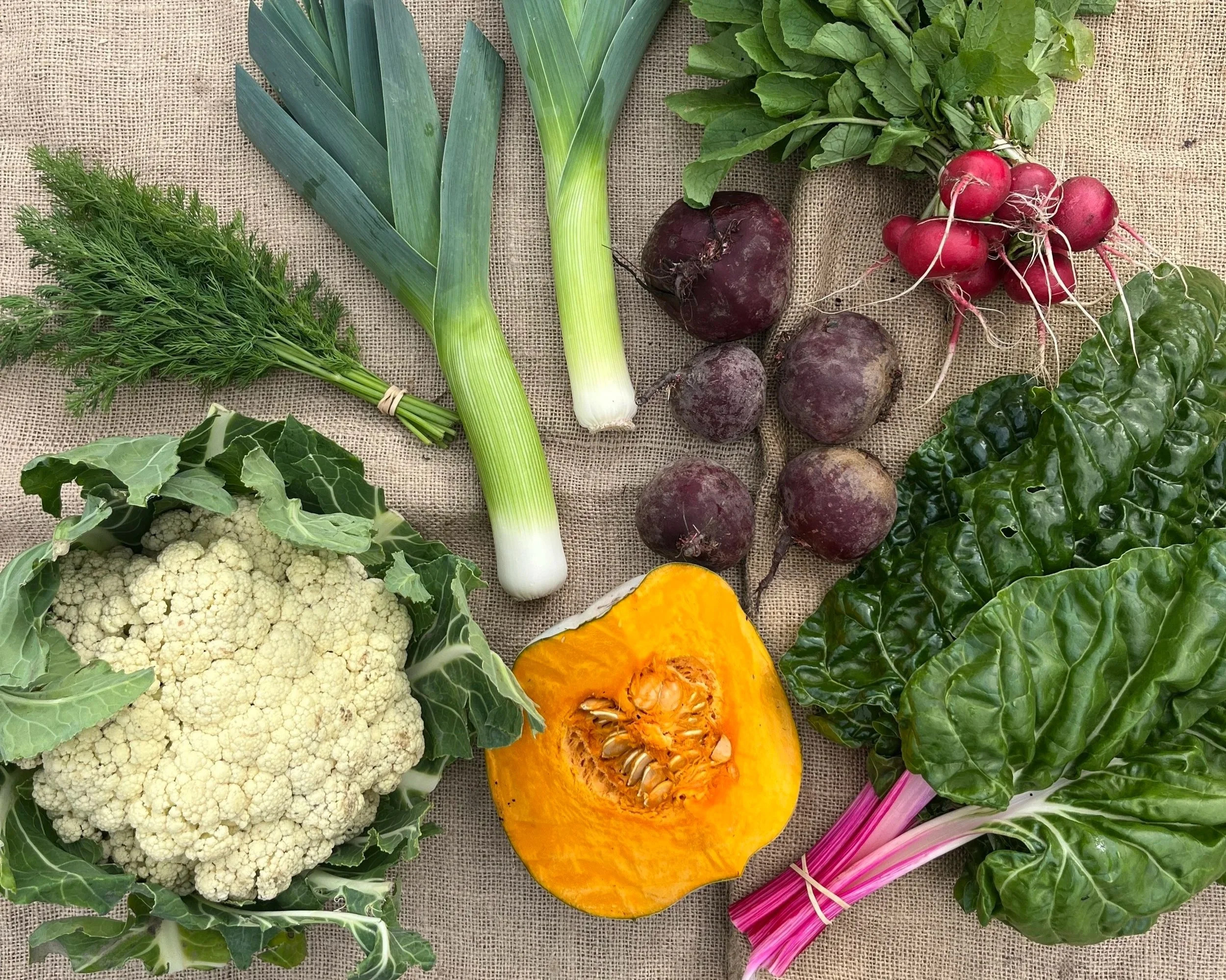WHat’s the deal with
Ōtaki vege bags?
Ōtaki Vege Bags is about giving more people the ability to choose ethically, locally-grown kai.
The project is a collaboration between Crooked Vege and Ahoaho māra kai (a market garden and education project at Ōtaki college) providing pay-what-you-can and pay-it-forward subscription vege bags to Ōtaki locals. Members subscribe to a season’s worth of weekly vege bags and choose a payment option which suits their financial circumstances.
Where does the vege come from?
Ōtaki Vege bags is predominantly supplied by Ahoaho māra kai (spray free) and Crooked Vege (certified organic). To keep the vege variety diverse (especially through the winter months) we also connect with other local, organic and spray free farms to bulk the vege bags with crops that Crooked Vege and Ahoaho māra kai don’t grow.
Ōtaki Vege Bag Spring Season
13 week season, August 16 - November 15
We’re slowly, but very steadily, heading back into the seasons of abundance.
Register your interest in a vege bag below, we’ll get in touch.
Ōtaki Vege Bags is a form of CSA (Community Supported Agriculture), where members sign up to receive a portion of a farm’s harvest for a season. This commitment by members to receive a season’s worth of vege helps the farmers know how much to grow, minimising waste and giving farmers some security in knowing they have a sale for their produce.
Our lovely friend, Charlie Budd, animated a video explaining our kaupapa, it does quite a wonderful job of making sense of it all.
How do we do it?
The pay-what-you-can and pay-it-forward system is a form of mutual aid where members who are more financially secure can choose to pay more than the recommended or ‘break even’ amount ($37.50), helping to subsidise vege for those who can pay less.
The team reviews costs at the end of each season, and with the current state of inflation, prices of vege bag will increase in time. This will happen at the beginning of future seasons to reflect the rising costs of what we buy in such as seeds and compost. This is also to give an accurate reflection of what it costs to grow local and organic kai. Our kaupapa will always remain the same however, members can always change their payment amount to suit their situation.
Want to know what previous
vege bags have looked like?
winter - week thirteen
Salad (Ahoaho māra kai)
Spring Onions (Ahoaho māra kai) or Fennel (Common Property)
Cabbage (Common Property)
Carrots (Crooked Vege Ōtaki)
Beetroot (Crooked Vege Ōtaki) or Onions (From Warren)
Microgreens, Parsley or Coriander (Crooked Vege Ōtaki)
Silverbeet (Crooked Vege)
Potatoes (Mingiroa Farm)
winter - week eight
spring - week five
Salad (Ahoaho māra kai)
Salad Radishes (Ahoaho māra kai)
Cavolo/Silverbeet (Crooked Vege Ōtaki)
Microgreens, parsley or Dill (Crooked Vege Ōtaki)
Carrots (Crooked Vege Ōtaki) or leeks (Live to give Organics)
Beetroot (Live to give Organics)
Cauliflower (warren), Nappa cabbage or Broccoli (Kai Ora Initiative)
Pumpkins (Crooked Vege Ōtaki/Live2Give Organics) or Potatoes (Mingiroa Farm)





